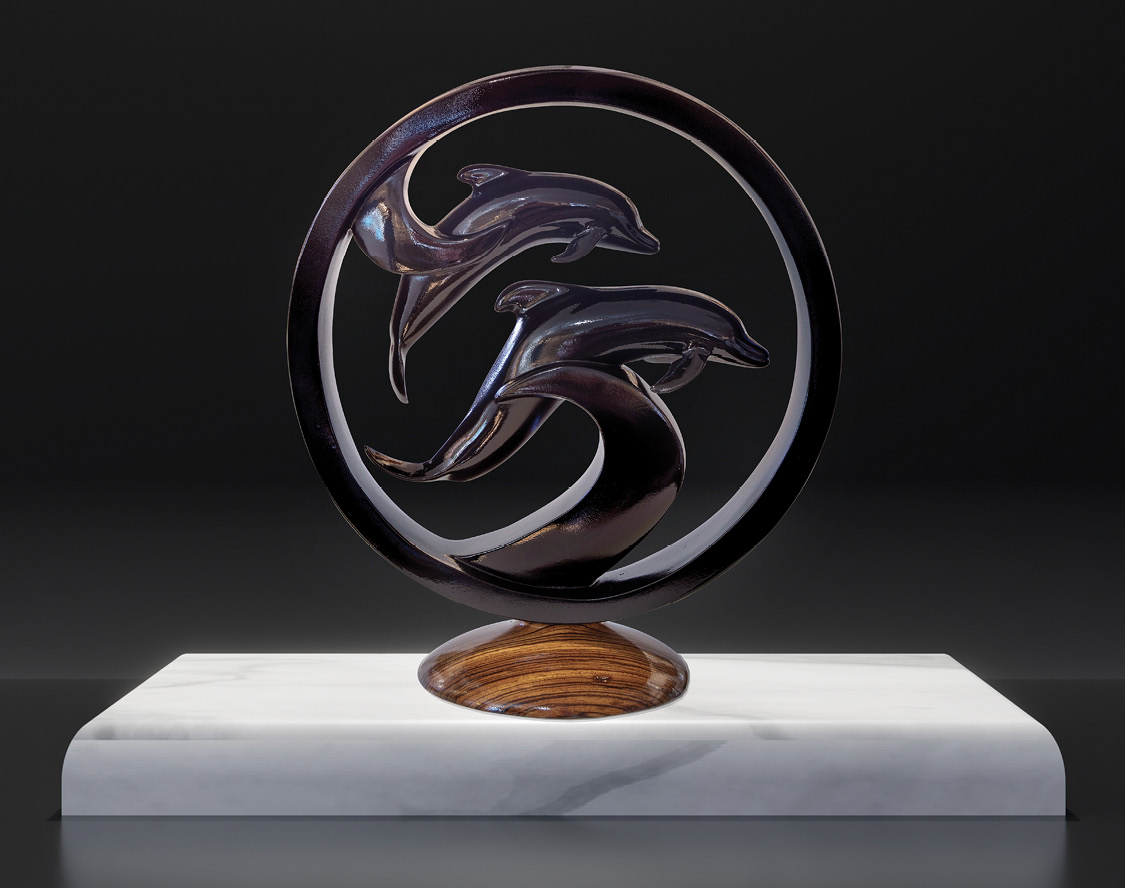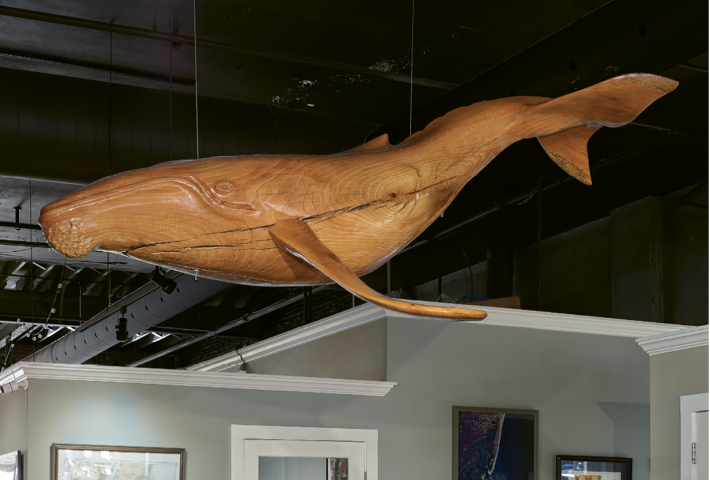
It was getting lost at sea 35 years ago that changed the trajectory of artist Stephen T. Vadakin’s life.
While sailing on the Intracoastal by Captiva Island on the west coast of Florida, he and a friend were disoriented as the winter sky got darker. For two hours they tried to work their way back to the marina, when suddenly a pod of more than a dozen dolphins surrounded the boat. The playful creatures splashed, whistled and clicked—immediately alleviating the frustration Vadakin and his friend were feeling as they gazed in awe.

“It was deeply inspirational, so I decided that the moment I got home I was going to do something creative with marine life,” Vadakin recalls. “That’s when I came upon wood carving.”
Fast-forward to the present, and the self-taught woodcarver has created 1,200-pound sculptures that hang in museums and research centers, done presentations for thousands of school children on marine life, written a book, and has works on display in galleries.
After the life-changing moment on the boat, Vadakin studied the anatomy of dolphins and whales, then visited his local Woodcraft Supply store to buy a Swiss-made chisel set—he uses the same set today. He practiced on 2-by-4 slabs of pine and cheap wood, then gradually moved up to working on more expensive native and exotic woods. Vadakin has also incorporated bronze into a few sculptures, using the lost wax method. Each piece is painstakingly done—it can take anywhere from 40 to 200 hours to complete a sculpture—and sanded with 400- and 500-grit paper, then topped with urethane clear coats.
“My main reason for carving exotic woods and beautiful native woods is the grain,” he explains. “If you look at my sculptures and watch the grain floating through the piece, it’s almost like water flowing through it.”

Ten years into his carving career, Vadakin founded an educational program for school children to teach them about marine life. Armed with his sculptures and a copy of the film Whales, he’s introduced close to 50,000 children to the majesty of dolphins and whales. “They just love it. They love seeing sculpture and art, and then to be able to mix science in,” he says of the experience. “These kids, their eyes just light up and they just want more information. They can’t get enough.” In 2009, he published the children’s book Adventures of the Thundering Whales: The Dreaded Weaved Catcher.
Some of his massive sculptures, weighing in at more than a thousand pounds, have also made their way around the country. Vadakin carved humpback whales that are on display at the Center for Coastal Studies in Provincetown, Massachusetts; Garaway High School in Sugarcreek, Ohio; and the South Carolina Maritime Museum in Georgetown. For the latter, the whale was carved from an 80-foot-long tree that fell in his neighbor, George Viering’s, yard during Hurricane Dorian in 2019. Together, they cut up the tree, and the artist was able to salvage a 12-foot section for his work.

dolphins with cypress wood stand and wenge base, 8′
Locally, his work can be viewed at the Lowcountry Artists Gallery in Charleston, where visitors can admire his African series. This includes a humpback whale sculpture carved from South African Oliepod burl and an 8-foot-tall zebrawood sculpture of swirling dolphins over a stand made from South Carolina cypress atop a 150-pound base of wenge wood from Africa.
“I try to put motion into these dolphin and whale sculptures that I’m carving so that, hopefully, it reminds the viewer of what these beautiful creatures look like in the wild,” Vadakin says.
Christiana Lilly is a freelance journalist in Pompano Beach, Florida. See more of her work spanning the arts, community news and social justice at christianalilly.com.

